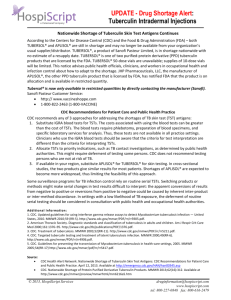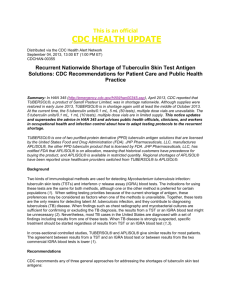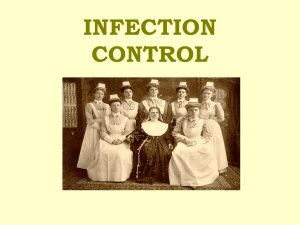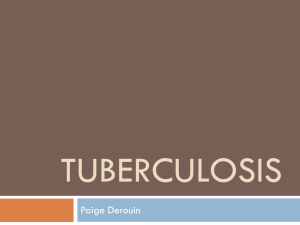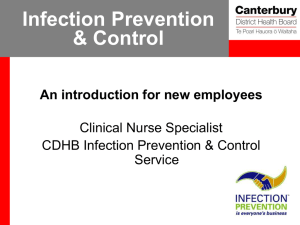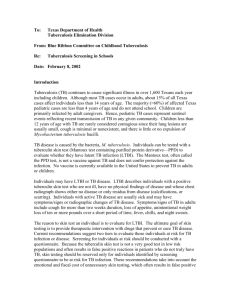Update to TB program:
advertisement
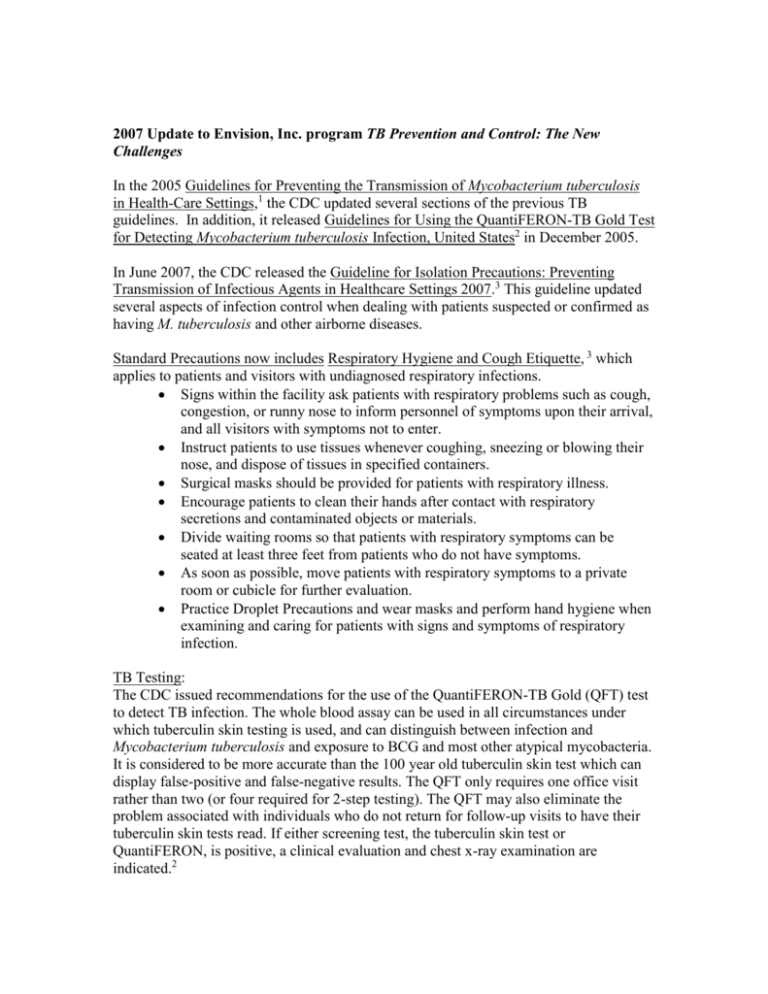
2007 Update to Envision, Inc. program TB Prevention and Control: The New Challenges In the 2005 Guidelines for Preventing the Transmission of Mycobacterium tuberculosis in Health-Care Settings,1 the CDC updated several sections of the previous TB guidelines. In addition, it released Guidelines for Using the QuantiFERON-TB Gold Test for Detecting Mycobacterium tuberculosis Infection, United States2 in December 2005. In June 2007, the CDC released the Guideline for Isolation Precautions: Preventing Transmission of Infectious Agents in Healthcare Settings 2007.3 This guideline updated several aspects of infection control when dealing with patients suspected or confirmed as having M. tuberculosis and other airborne diseases. Standard Precautions now includes Respiratory Hygiene and Cough Etiquette, 3 which applies to patients and visitors with undiagnosed respiratory infections. Signs within the facility ask patients with respiratory problems such as cough, congestion, or runny nose to inform personnel of symptoms upon their arrival, and all visitors with symptoms not to enter. Instruct patients to use tissues whenever coughing, sneezing or blowing their nose, and dispose of tissues in specified containers. Surgical masks should be provided for patients with respiratory illness. Encourage patients to clean their hands after contact with respiratory secretions and contaminated objects or materials. Divide waiting rooms so that patients with respiratory symptoms can be seated at least three feet from patients who do not have symptoms. As soon as possible, move patients with respiratory symptoms to a private room or cubicle for further evaluation. Practice Droplet Precautions and wear masks and perform hand hygiene when examining and caring for patients with signs and symptoms of respiratory infection. TB Testing: The CDC issued recommendations for the use of the QuantiFERON-TB Gold (QFT) test to detect TB infection. The whole blood assay can be used in all circumstances under which tuberculin skin testing is used, and can distinguish between infection and Mycobacterium tuberculosis and exposure to BCG and most other atypical mycobacteria. It is considered to be more accurate than the 100 year old tuberculin skin test which can display false-positive and false-negative results. The QFT only requires one office visit rather than two (or four required for 2-step testing). The QFT may also eliminate the problem associated with individuals who do not return for follow-up visits to have their tuberculin skin tests read. If either screening test, the tuberculin skin test or QuantiFERON, is positive, a clinical evaluation and chest x-ray examination are indicated.2 Diagnosis: The time frame during which individuals should undergo sputum collection to diagnose active pulmonary TB or determine whether a TB patient is no longer considered infectious has changed. Previously, at least 3 sputum samples would be obtained on different days. The CDC now recommends that three consecutive negative sputum smears be collected 8 to 24 hours apart, with at least one of these samples obtained during early morning hours.1 Change of Terms: Acid-fast bacilli (AFB) rooms are now called airborne infection isolation rooms (AIIR). 1,3 Patient Placement: Place infected or colonized patients in a private isolation room whenever possible. Single room placement is always indicated for Airborne Precautions. If a private room is not available, patients may share a room with another patient actively colonized or infected with the same microorganism and no other infection. See the guideline for details on the type of M. tuberculosis in question.3 Patient Transport: Limit the movement of patients on isolation precautions to essential procedures. If the patient must leave the isolation room, the patient should perform hand hygiene before leaving the room and wear the appropriate PPE. Patients on Airborne Precautions should wear surgical masks; and if they have skin lesions, they should cover the affected area. However, transporters are not required to wear masks outside of the isolation room. Transporters should always perform hand hygiene before transporting patients and after removing PPE.3 Discontinuation of Transmission-based Precautions: The CDC has issued guidance for known pathogens. Consult the guidelines, and follow your facilities protocols as well as state laws and regulations for the type of M. tuberculosis in question.3 Employee Testing: Baseline testing upon employment should consist of a QFT test or a two-step tuberculin skin test (if negative on the first test). After baseline tuberculin screening is performed, the CDC is no longer recommending routine, annual tuberculin screening (TST or QFT) in low risk facilities. Low risk facilities are defined as those facilities with no evidence of TB transmission and either fewer than three TB patients in the last year and <200 beds or few than six TB patients in the last year and >200 beds. Annual screening (TST or QFT) is recommended for medium risk facilities. Public health guidance or regulations should be followed for facilities with ongoing transmission or facilities in states with specific TB screening requirements.1 See references below for explicit details and guidance: 1. Jensen, PA et al. Guidelines for Preventing the Transmission of Mycobacterium tuberculosis in Health-Care Settings, 2005. MMWR December 30, 2005 / 54(RR17);1151. http://www.cdc.gov/mmwr/preview/mmwrhtml/rr5417al.htm 2. Mazurek, GH et al. MMWR December 16, 2005/54 (RR15);49-55. http://www.cdc.gov/mmwr/preview/mmwrhtml/rr5415a4.htm 3. CDC. Guideline for Isolation Precautions: Preventing Transmission of Infectious Agents in Healthcare Settings 2007. http://www.cdc.gov/ncidod/dhqp/gl_isolation.html
